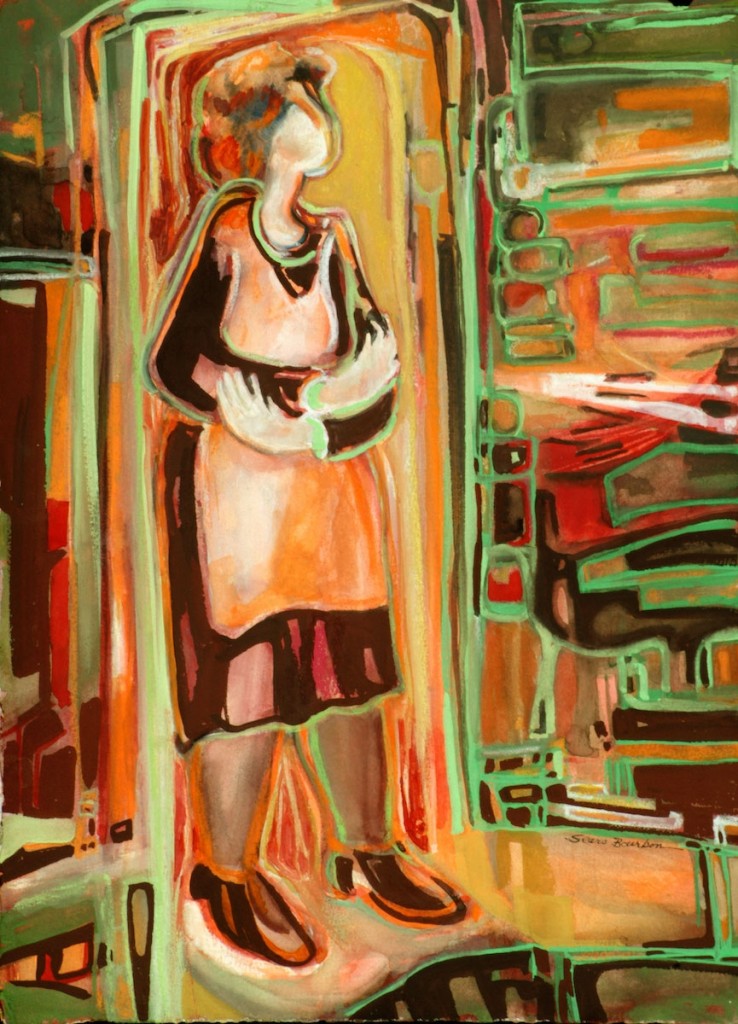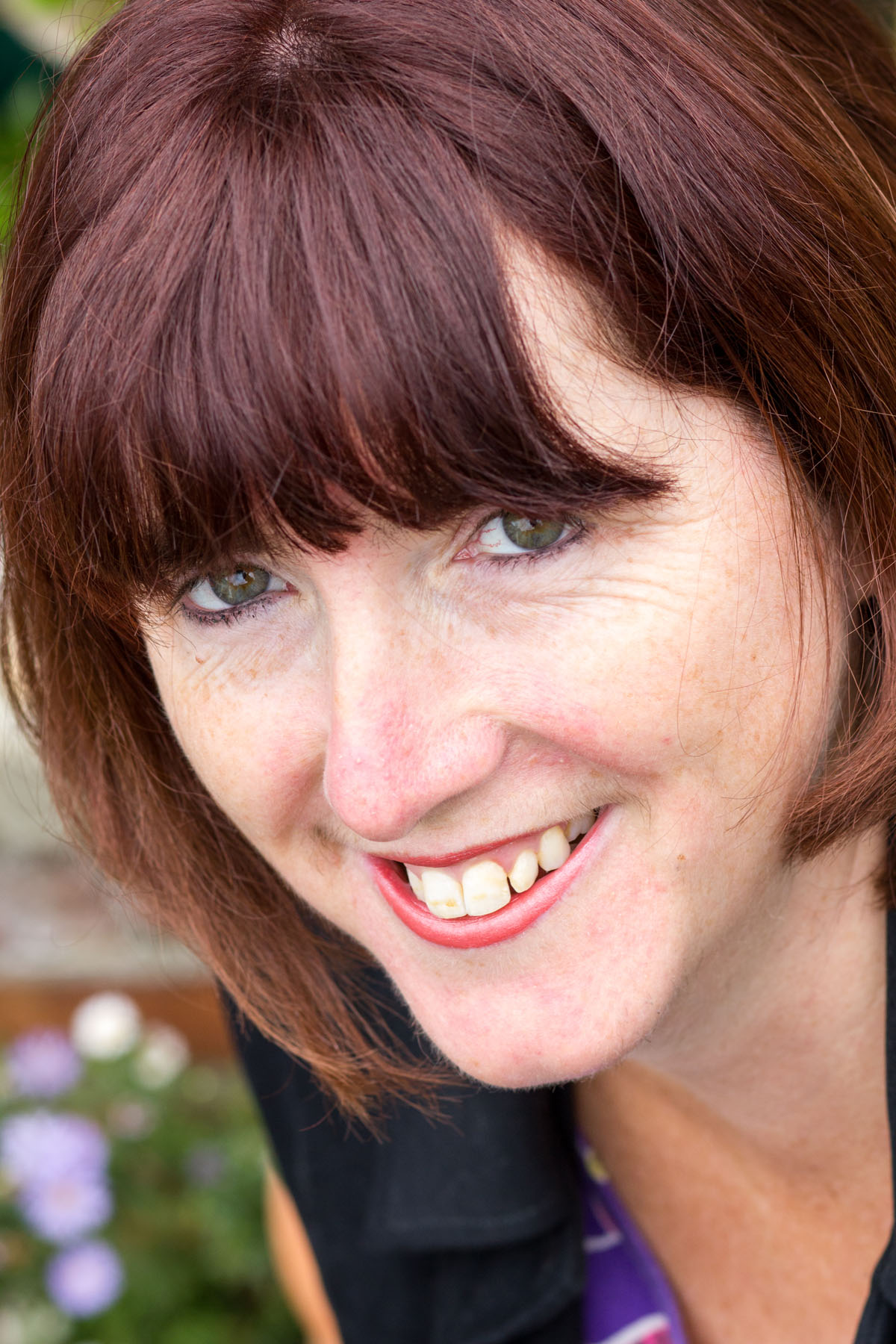Deborah Bazalgette: Your short story The Sequined Shawl is an account of experiences that can be seen as both universal and individual. How important is it to you to write about things that have touched you personally?
Simone Davy: Writing about things which are close to home helps to make my writing feel more real and truthful. I want to write in a way that the reader can relate to. I try to focus on the everyday things that we do, even at difficult times. From my own experiences of loss, I know that it is both important and necessary to carry on with the everyday; it is often these things that get us through.
I have found that writing about things that I have experienced is very therapeutic. I imagine that writers have less need for counselling. I certainly feel much better when I have put my thoughts into words. The writing seems to take the drama out of it, you can begin to see a different side, a different perspective and at times there is humour there too.
I think the reader needs to care about the characters. If you are creating characters that you can empathise with, then the chances are your reader will too.
DB: American readers may see the British ‘stiff upper lip’ approach evident, especially in Marge’s story. Did you intend to convey emotion through descriptive details rather than expressing it openly?
SD: Yes, I think this is a very English behaviour and was certainly very evident in my family. Miscarriage was not discussed openly; I recall overhearing talk about pains, bed rest and ‘what a lot of women had to put up with’ – but nothing more.
With this in mind I wanted to convey the feelings and emotions of the three women by showing the colours, /images and objects that surrounded them. For example: Marge lay on a hospital bed with the metal guard between herself and the doctor, Angela looking at the bright red tiles and white lino and Sabrina’s description of the needle being compared to sucking treacle from a spoon.
Also I wanted to show how the women maintained that ‘stiff upper lip’ through their actions; Angela counting stitches rather than weeks – doing rather than talking being the method of coping.
I am intrigued by the idea, which may just be a British thing, that it is best not to tell anyone you are pregnant until you are 12 weeks in. This suggests women should hide their miscarriages – suffer them in silence. It seems as though they are still an inconvenience. If this was not the case, miscarriage would be less of a mystery. Now we have the ‘celebrity miscarriage’ –but I’m not sure this is enough yet for the ordinary or rather the extraordinary woman on the street. Writing about it is maybe one step forward.

DB: As you wrote the story did you feel that the medical advances had improved women’s experiences of miscarriage?
I wanted to write about how the medical establishment has changed in its approach to miscarriage, but also show how the experiences may be different but not necessarily better.
Thanks to such medical pioneers as Lesley Regan, there have been huge advances in the way miscarriages are dealt with. However in the UK, there is still the view that a woman should have three miscarriages before she is able to undertake any tests.
I think all three women were reliant on the medical profession. Each era had a different perspective. In Marge’s time without pregnancy tests women may have just assumed heavy bleeding was a normal part of their cycles. For Angela bed rest was very much the only suggestion. For Sabrina the medical advances obviously enabled her to have two healthy babies, but the journey along the way was not an easy one. Women in the past may have suffered miscarriages in isolation in their own homes; today, women may find themselves suffering the same experiences but with the added pressure and stress of tests, appointments and hospital bureaucracy.
DB: You told me once that your grandmother was a great storyteller. Were you conscious as you wrote the story of the passage of time and change in culture that led you to writing it down rather than telling it out loud?
SD: My grandmother has been a great influence on my writing. From the time I was a child she would tell me stories about her childhood in Scotland. Storytelling was something I thought everyone did. Her voice is very strong in this piece as I can recall the way she spoke, the words she used and the expression on her face as she did so. It is wonderful to hear her voice as I write.
She once told me the story of how her father took all of her books and set them alight in the family fire. He said they were a waste of time for a girl. By telling stories to her brothers and sisters and later to me, she was able to express herself and keep her stories alive. I imagine that she never for a moment thought that anyone would be interested enough to read her stories and so never thought of writing them down. It is a luxury to be able to write without the kind of censorship that women in the past often had to put up with.
Deborah Bazalgette started writing seriously after her youngest child went to university. She completed a creative writing course with the Open University in 2012, and was lucky enough to have her first ever submission – a short story – accepted by What The Dickens Magazine, for their sunflower edition in August 2012. To learn more about Deborah and her writing, please visit her blog.
You may also visit Simone’s blog at http://simonedavy.wordpress.com/


Pingback: The Sequined Shawl | Rkvry Quarterly Literary Journal
Pingback: Interview with Simone Davy | Deborah Bazalgette
Pingback: Interview | Simone Davy
Pingback: “The Sequined Shawl” by Simone Davy | Rkvry Quarterly Literary Journal